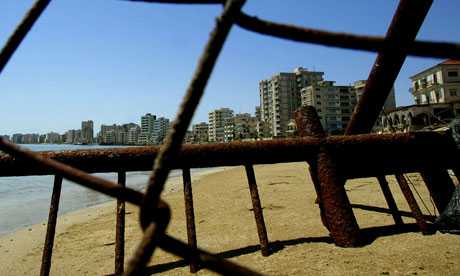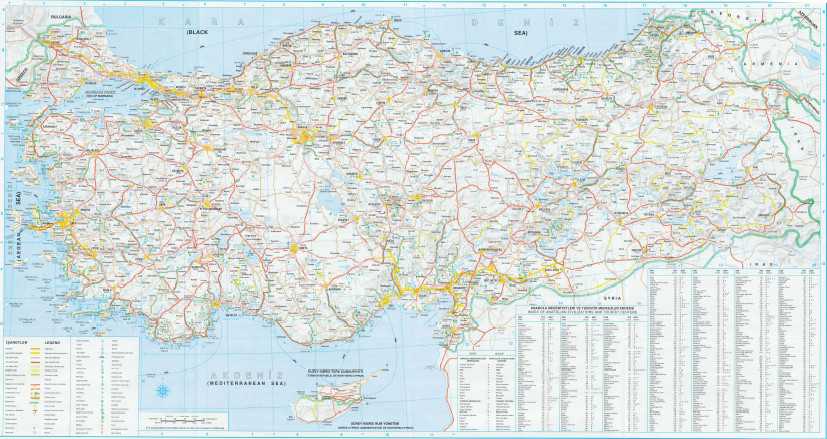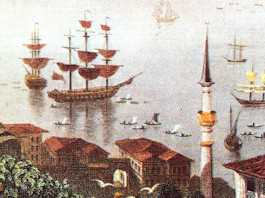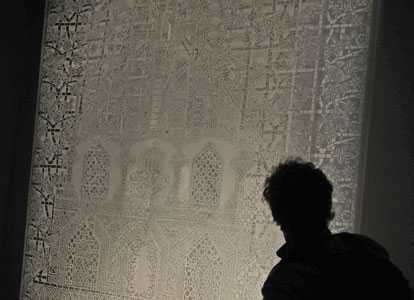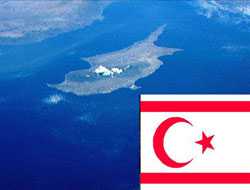 Report on Future Strategies for Turkish Republic of Northern Cyprus prepared by Turkish Economy Bank was submitted to TRNC executives on Monday.
Report on Future Strategies for Turkish Republic of Northern Cyprus prepared by Turkish Economy Bank was submitted to TRNC executives on Monday.
Report on Future Strategies for Turkish Republic of Northern Cyprus (TRNC) prepared by Turkish Economy Bank (TEB) was submitted to TRNC executives on Monday.
The report, jointly prepared by TEB, Foreign Economic Relations Board of Turkey (DEIK), and Turkish-TRNC Business Council, aims at assessing future strategies of TRNC and revealing areas of investment. The report considers TRNC with all its social and economic processes.
Halim Mete, Deputy Chairman of the Union of Chambers and Commodity Exchanges of Turkey (TOBB), while addressing a ceremony held to submit the report, stated that, “we want TRNC to stand on its own legs with a strong economy and qualified man power source”.
“The report is related to the future of TRNC,” Mete said and referred to referendum on Annan plan dated April 24, 2004.
“Turkish Cypriot people voted in favor of the report and Greek Cypriot party refused the solution plan supported by the UN and European Union. In the end, Turkish Cypriot people supporting the solution were punished and could not get rid of economic and political blockade,” Mete said.
TOBB Deputy Chairman said, “TRNC has an extremely well-trained human resource and an tourism potential. We have the opportunity to turn north of Cyprus into an education center for East Mediterranean and the Middle East. There are people eager to invest in TRNC in case the conditions become appropriate. A series of studies may take place to boost competitive capacity of TRNC and to provide appropriate conditions for those who want to make investment.”
TEB Director General Varol Civil, speaking at the ceremony, stated that a Conference was organized last May to assess potential of TRNC.
“The report justified the confidence we felt in potential of TRNC that it would become a university island with its high education level, geographical position, beauties and appropriate climate conditions,” Civil said.
Mustafa Fehmi Gurbuz, chairman of Turkey-TRNC Business Council, said the report was based on the statements of people who experienced expectations and the problems the most in Cyprus business world.
Kaya Turkmen, Turkey’s Ambassador to Lefkosa, said an economic atmosphere focusing on private sector and which has high competitive capacity was targeted for economy of TRNC to reach a stable structure in the future.
“When we make a general evaluation, economic activities in TRNC intensify on service sectors like tourism and education. Turkey will extend any necessary contributions,” Turkmen said and stated that Turkish-TRNC Business Council should assess well the problems hindering improvement of bilateral trade relations and wanted them to disclose the public the problems and their proposals.
Cyprus Turk Chamber of Trade President Gunay Cerkez said, “the report was a study assessing the strong and weak aspects of the TRNC, as well as the opportunities and threats. TRNC passes through a difficult and important period both in economic and political sense. However, we believe that this period may be overcome with planned measures and decisive stances. Problems and difficulties caused by blockage should not be a hinderance for us.”
Cyprus Turk Chamber of Industry Chairman Ali Cirali said political uncertainties caused wrong economic, social and bureaucratic structuring in TRNC. “Today, TRNC is at crossroads. There are two alternatives in front of TRNC. Either we will get reorganized with all its institutions and organizations, or we will be the ‘poor region’ of TRNC after the solution.”
“We are aware of the face that we should take bitter medicine in restructuring period,” he said.
TRNC Economy & Energy Ministry Undersecretary Omer Koseoglu said the report was very important for them noting that the government aimed an economy focusing on private sector.
, 04 October 2010

